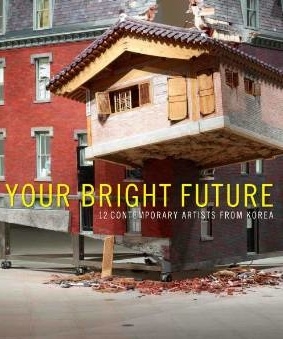6.28 – 9.20
Los Angeles County Museum of Art
http://www.lacma.org/
11.22 – 2.14
Museum of Fine Arts, Houston
http://www.mfah.org/

Billed as the first major exhibition of contemporaryKorean art in the United States inalmost two decades, Your Bright Future featuresartists born between the late 1950s and the early 1970s, representing two enterprising generations that since the 1990s have made contemporary Korean art over into a fluidly global cultural and discursive platform. The two most senior artists in the group already exemplified this crucial collective experiment early on in their respective careers. The late Bahc Yiso (1957?2004), after spending the 1980s in New York, returned to Korea to introduce postmodernism and multiculturalism, while honing a singular aesthetic of cynical wit. Concurrently, Kimsooja, with her roving performances and videos, emerged as one of the foremost international practitioners of work addressing notions of nomadism and globalism in contemporary art.
In fact, more than two-thirds of the artists on the list have studied overseas and about one-third continue to live and work, at east part-time, outside Korea. Most are well represented in biennales and exhibitions inAsia, Western Europe and the United States: Choi Jeong Hwa, Koo Jeong-A, Suh Do Ho and Yang Haegue ? who represents Korea this year at the Venice Biennale ? being especially visible names in the international circuit.
The exhibition promises to give generous space to each artist by featuring largescale installations or substantial bodies of work. This is a welcome gesture, since many “flag” exhibitions of this sort often fall victim to thematic oversimplification. Even with the manageable number of participants, another challenge will be how to make sense of the diversity of their practices. Although it is undeniable that virtually all of these artists deal
with Koreanness in their work in one way or another, the concept itself ? or any national, cultural, ethnic identity, for that matter ? is a tricky one to maneuver in a curatorial project. The exhibition also seems to be motivated by institutional and local rationales for both organizing museums. Los Angeles is the home of the largest Korean immigrant population in the world, and both institutions have large collections of traditional Korean art. For ? or in spite of ? this reason, it will be important for Your Bright Future to demonstrate that contemporary Korean art consists of collective yet highly individualized intellectual and artistic efforts to undermine essentialized, nationalistic definitions of Korea and Koreanness. (Doryun Chong)
